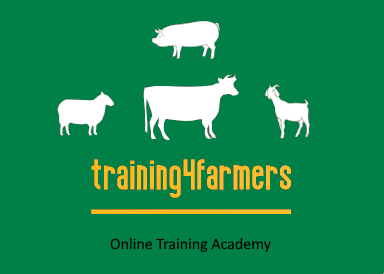The normal farrowing process (and how to assist if required)
The farrowing process
The first pig is born
About half of the pigs are presented head first and about half are presented tail first
The sow may exhibit mild straining
More pigs are born approximately 15 minutes apart
The total time for the delivery of the entire litter varies with litter size but the process usually takes less than 2.5 hours.
The placenta, membranes surrounding the fetus, is usually expelled 2-4 hours after the last pig; however portions of the placenta may be delivered during the farrowing period
You should not observe large volumes of discharge
Signs of a difficult farrowing
Gestation exceeding 116 days
Lack of appetite
Blood tinged fluid and meconium* are discharged without signs of straining
*Meconium is a thick, green, tar-like substance that lines your baby's intestines during pregnancy. Typically this substance is not released in your baby's bowel movements until after birth. However, sometimes a baby will have a bowel movement prior to birth, excreting the meconium into the amniotic fluid.
Straining without delivery of pigs
The time between the birth of pigs exceeds one hour, and the sow still has a full abdomen
Foul-smelling, brown /gray discharge
Reddening of the sow's eyes
Exhaustion after a prolonged labor
Sow distress: rapid breathing, weakness, inability to rise
How to examine the birth canal
***When the time between the birth of pigs exceeds one hour, intervention by the manager is necessary.
***Intervention must be gentle. The tissues of the birth canal are easily bruised and torn. Damage can lead to swelling, hemorrhage, and death of the sow and litter. Excessive damage can also negate the option of the use of cesarean section as a treatment.
Familiarize yourself with the basic anatomy of the reproductive tract
Thoroughly clean the sow's rectal and vaginal area
The manager's fingernails should be cut short
The manager's arm should be washed with soap and water, gloved, and (KY Jelly/ Lubrivet)
The hand should be cupped in the shape of a cone, the lips of the vulva are parted, and the hand gently inserted into the birth canal
If the sow is not ready to farrow the forward part of the canal will be closed
The bony pelvis can be felt below and at the side of the hand
The hand can be moved forward through the pelvis and into the uterus which slopes downward and divides into 2 sides.
The birth canal should be examined for evidence of damage (tears, bruises)
The causes of delayed farrowing should be determined and corrected if possible
Types of farrowing problems and methods of assistance
***Never use oxytocin before determining the cause of the problem
| Type of problem | Method of assistance |
| Uterine inertia (the uterus is unable to contract) |
|
| Improper presentation of pig | |
| Breech | Manual intervention: Hook your index finger under the hock of each hind leg. Extend the legs caudally or use a snare. |
| Two piglets simultaneously | Manual intervention: Grasp head, lower jaw, or feet to deliver one pig at a time |
| Pig upside down | Manual intervention: Grasp head, lower jaw, or feet |
| Canal obstruction | |
| Hymen constriction in gilt (first pig not delivered) | Manual dilation or severing with scissors |
| Vaginal or cervical prolapse | Call veterinarian |
| Pelvis too small | Call veterinarian |
| Constipation |
|
| Full Bladder |
|
| Deviation of the uterus | |
| Partial uterine torsion | Call veterinarian |
| S-shaped deviation | Manual intervention |
| Pig is too large | Call veterinarian |
| Sow hysteria |
|
| Retained placenta/ blood or pus discharge | Rare- usually indicates that one or more pigs are still present in the reproductive tract- Call veterinarian |
| Vaginal, uterine or bladder prolapse | Call veterinarian |
| Hemorrhage | Call veterinarian |


